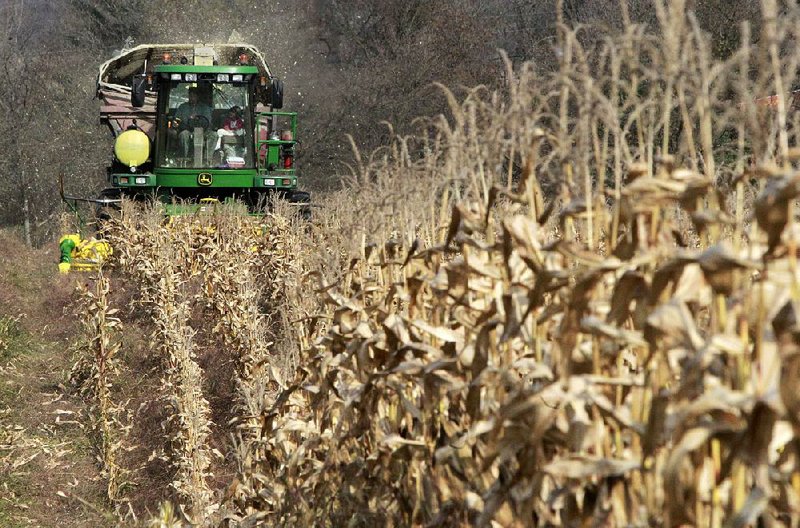WESTFORD, Vt. - A new cybertool that helps map crops and monitor irrigation systems came to life after a University of Vermont researcher realized farmers just weren’t very good at keeping records.
“They would guess a lot,” said Heather Darby, an agronomist from the University of Vermont Extension. “Or they’d write it down on little scrap pieces of paper or cigarette packs, like anything they had laying around they’d write it on, and then they’d show up for class, and we’d try to decipher all these little notes.”
Noticing that farmers had grown accustomed to carrying cellphones, whether in the field, on tractors or in the barn, she developed the goCrop Web and mobile app.The project was awarded about $400,000 from the U.S. Department of Agriculture this spring to expand the app for use across the Northeast and California, where soil conditions are different, and add functions for mapping, grazing and pest management.
Across the country, farmers are relying on new cybertools to manage manure and fertilizer applications, monitor irrigation systems, coordinate harvests and check the weather and real-time agricultural markets.
“The tech-savvy farmer is able to speed up the decision-making cycle and do his or her job much more effectively,” Ben Potter, technology editor for Farm Journal,wrote in an email.
In Giltner, Neb., Zach Hunnicutt carries his iPad and smartphone wherever he goes on his farm, and he uses a combination of apps. He said he used his iPad to monitor humidity levels during a soybean harvest last week at the 2,500-acre farm.
The tools digitize information that used to be kept in notebooks and stores it in the “cloud,” where it can be shared with fellow farmers and can’t blow out of a pickup or tractor and get lost.
The FieldView app interfaces with tractors and planters at planting time and creates maps to reference what hybrids have been planted where. SoilWeb tells what soil type the farmer is standing on and what’s near him so he doesn’t have to look at maps or read through the legend. Farmers can also control their irrigation pivots from a smartphone.
From a practical standpoint, Hunnicutt said, the apps help farmers check irrigation systems without burning fuel and tells them when something shuts down. It also lets farmers know that crops are getting water when they need it, he said.
“So there’s a definite bottom-line improvement just straight from those applications,” he said.
According to Josh Flint, editor of Prairie Farmer, which focuses primarily on Illinois agriculture, one of the latest developments is the use of drones to scout fields faster.
“Farmers are definitely adopting more technology at a rapid pace,” Flint said.
The 50 or so dairy farmers in Vermont using the goCrop app, which costs about $250, can get crop reports to see what they’ve done to each field for the whole year. They can print and send their records to the state instead of sitting down at the end of the year and compiling notes.
The app could also save them money by preventing farmers from wasting fertilizer.
“So next year when we get ready to spread manure, I’ll have everything all documented, and it will tell us how many loads of manure we can put on,” said Tony Pouliot, who farms with his father in Westford. “Then when we come in to plant the corn, I know how much fertilizer to use because of the program. … There’s no guessing. It’s all straightforward.”
Farmers also can use the app while cutting corn or grass in the field.
“In the field chopping, you add the number of takes. You can just keep hitting the tab on your iPhone. That’s another load, that’s another. It’s kind of neat,” said Nancy Fiske, of Windfall Acres Farm in Franklin.
But the big benefit is reducing the need for manual record-keeping.
“It’s a constant challenge to get dairy farmers to record-keep at all,” said Richard Kersbergen, a University of Maine extension professor who said the state is planning to evaluate and potentially revise its program for managing nutrients on farms and find alternate ways for farmers to meet the law. “Go-Crop would definitely be a potential useful tool in that manner.”
Front Section, Pages 4 on 10/28/2013
